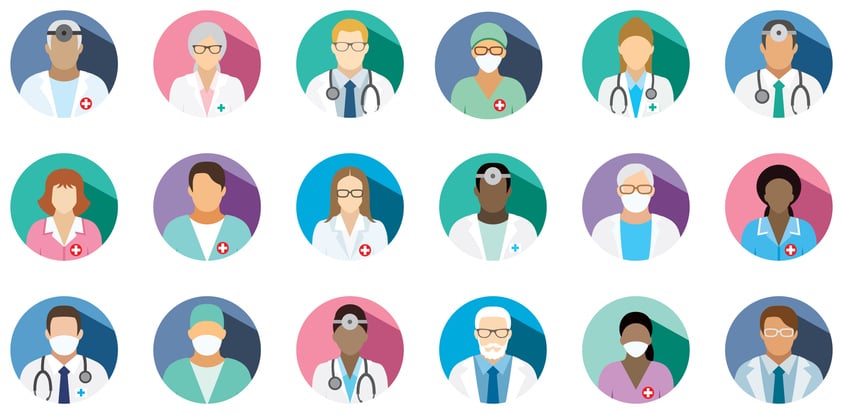The healthcare sector has spent the past few years in triage mode scrambling to address unprecedented staffing shortages while maintaining patient care. Now approaching 2026, the conversation is shifting. It’s no longer just about filling roles quickly; it’s about building a sustainable workforce strategy that will hold up over time.
In our previous article, we explored how technology, trust, and talent are reshaping healthcare recruitment. This follow-up takes a closer look at how organizations can move beyond quick fixes and create a tactical approach to attract, grow, and retain top talent.
Transitioning Technology from a Tool into a Recruitment Strategy
Healthcare systems are rapidly adopting AI-powered recruitment platforms, predictive analytics, and virtual reality to close staffing gaps. But technology is no longer just a helpful enhancement—it’s becoming a strategic cornerstone.
- Predictive Matching: Not only using AI to analyze the candidate's skills, experience, and career goals, but going further by using predictive analytics potential for long-term success and career growth within your organization. It can forecast a candidate's likelihood of retention in a specific role or department based on historical data.
- Virtual Hospital Tours: Once a candidate is matched with a role, offer a Virtual Reality experience. They can don a headset to take a 360-degree tour of the unit or facility where they would work. They can virtually "walk" through the emergency department, a surgical suite, or a patient room, seeing the real-world environment before they even interview.
- AI Interview Coach: An AI-powered chatbot can engage in a pre-interview conversation, answering common questions about the role, culture, and benefits. It can even conduct a practice interview, giving the candidate real-time feedback on their responses and providing tips for a successful conversation with a human recruiter.
The takeaway? Treat technology as an integrated part of your workforce planning strategy, not an isolated HR initiative. The organizations that succeed will be those that align tech investments with both clinical needs and recruitment goals.
Reimagining Partnerships with Educational Institutions
It's not enough to simply partner with a school. Forward-thinking health systems are creating "earn-while-you-learn" ecosystems that fully integrate students into the organization from day one.
- Apprenticeship-to-Clinician Programs: Move beyond traditional internships. Create formal, paid apprenticeship programs for aspiring nurses, medical assistants, or other allied health professionals. These apprentices can work in non-clinical roles (e.g., patient services, administrative support) while pursuing their degree, with tuition assistance and a guaranteed job offer upon graduation.
- Embedded Faculty and Curriculum Development: Health systems can co-develop curriculum with nursing and medical schools. This ensures that what is being taught in the classroom directly aligns with the skills and technologies used in the hospital. For example, a hospital can provide AI-driven diagnostic tools to a university's simulation lab, giving students hands-on experience before they ever enter a clinical setting.
- Career Fairs with a Twist: Instead of a traditional job fair, host an interactive "Career Exploration Day" at a local junior or high school. Feature hands-on activities, such as mock surgeries with models, or patient care simulations, to get people excited about careers in health and medicine.
The take-away? Forward-thinking health systems are reimagining partnerships with schools by integrating students into paid, career-focused programs from day one. By co-creating curriculum, embedding faculty, and offering immersive career exploration, they ensure graduates are job-ready and aligned with real clinical needs.
Keeping Healthcare Recruitment Human in a Digital World
Automation and AI have transformed hiring processes but they also risk making recruitment feel transactional. Candidates don’t want to feel like they’re just another data point in a database.
Successful healthcare organizations are blending high-tech with high-touch by:
- Providing personalized communication throughout the hiring journey.
- Clearly defining and promoting a strong employer value proposition (EVP).
- Ensuring that candidates feel seen, respected, and supported at every stage.
At the end of the day, technology may open the door, but human connection invites people to stay. A positive candidate experience leads to stronger hires, better retention, and a healthier organizational culture.
Where Does Your Organization Grow from Here?
The healthcare staffing crisis of 2025 is forcing organizations to make bold changes. Those that embrace technology, trust, and talent as core pillars of their recruitment strategy will not only survive—they’ll emerge stronger, more agile, and better prepared for the future of care delivery.
Is your hospital, clinic, or healthcare facility struggling to recruit and retain top talent?
Harger Howe Advertising specializes in data-driven healthcare recruitment marketing designed to connect your organization with highly qualified nurses, physicians, and allied health professionals.
Let’s work together to:
- Build an employer brand that attracts top talent.
- Deliver an exceptional candidate experience from first contact to onboarding.
- Develop long-term workforce strategies that reduce turnover and improve patient care.
Contact us today to start building a smarter, stronger and more engaged workforce.










